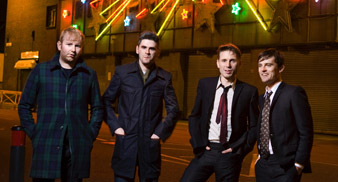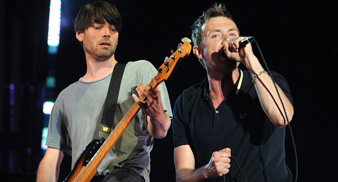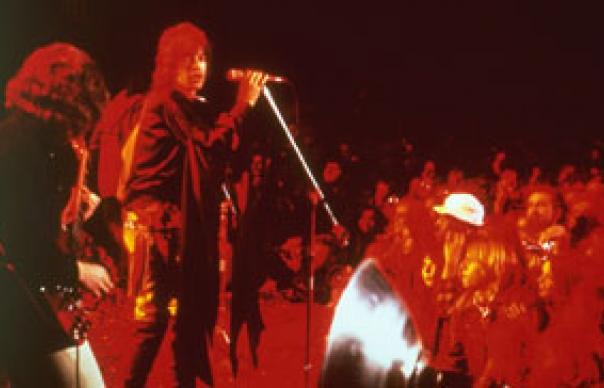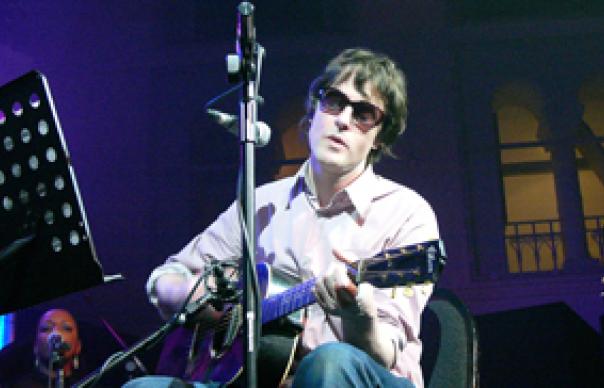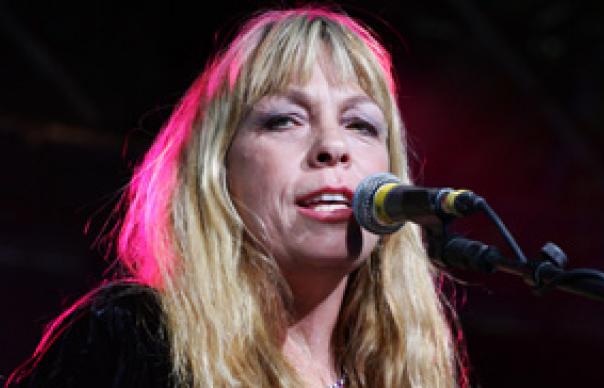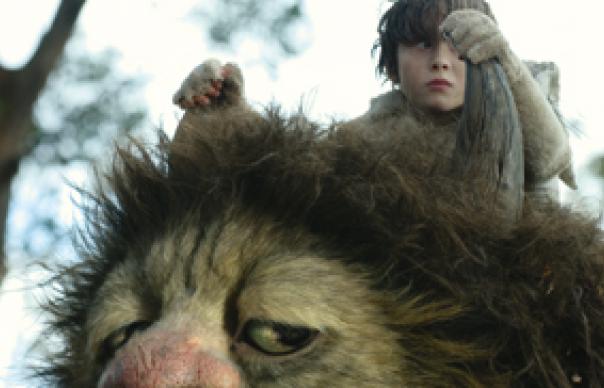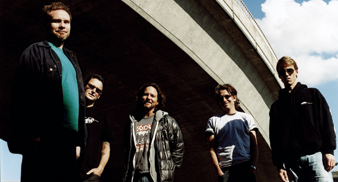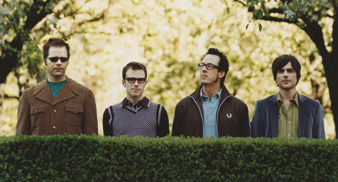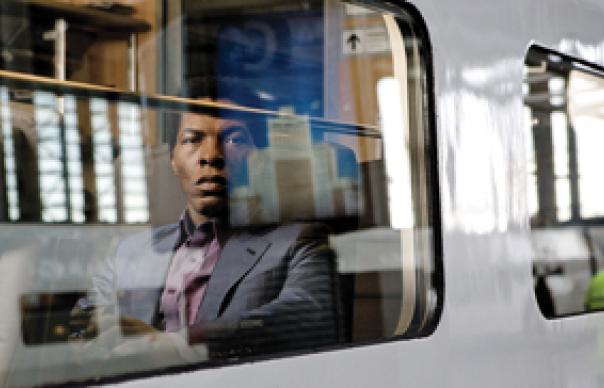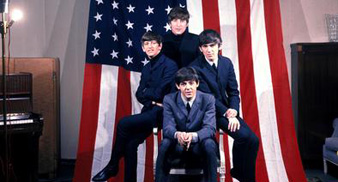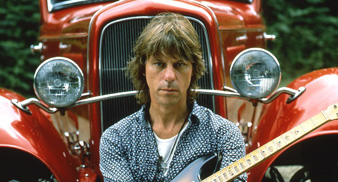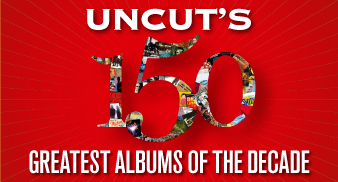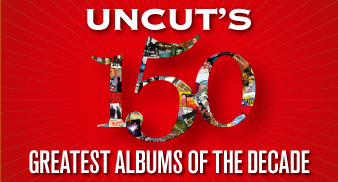Over the past 10 years, the musical landscape – and especially the ways in which we receive and listen to music – have been transformed at a pace few of us could have predicted. The musical cultures Uncut treasures, however, have continued to flourish. Indeed, some of our more obscure favourites, like Brightblack Morning Light or Lift To Experience, are now as available as a Dylan album; just a click away.
To that end, Uncut’s 150 is unashamedly a specialist’s list, since it’s easier than ever before to become a specialist. There are no concessions to eclecticism or commerce, just 150 LPs that have defined the tastes of Uncut’s staff and, we hope, those of our readers. Fifteen of them appear on this month’s free CD. Here they come, followed by an interview with the man who bestrides the 150 – and the decade – like a candycane-striped colossus…
***
100 to 51
100
JIM O’ROURKE
Insignificance DOMINO 2001
O’Rourke’s reputation as an avant-rock fixer meant his early Noughties were
a frantic blur.
He joined Sonic Youth, caused breakthroughs and ructions in the Wilco camp, among many other things, before retreating to Japan. He also managed one straightforward solo LP, Insignificance, completing his trilogy of Nic Roeg-inspired albums with a vigorous burst of Southern-tinged rock. Unpredictable – and hugely stimulating – to
the last.
99
Babyshambles
Down In Albion Rough Trade, 2005
The release of Pete Doherty’s first post-Libertines album was overshadowed by the kind of extra-curricular anarchy that at the time regularly placed him in the so-called tabloid glare. First, there was the hilarious hoo-ha over pictures of his then-girlfriend, the leggy model Kate Moss, apparently enjoying a snoot-full of cocaine at a recording session.
This was followed by a fortnight or so, during which the evidently hapless, but cheerfully unrepentant Doherty was being arrested up to twice a day on a variety of usually drug-related charges, often involving erratic driving at odd hours. This was actually quite funny for a while, as a bungling constabulary, like something out of an Ealing comedy, pursued him hither and yon. But it became quickly tiresome. Especially when Down In Albion was finally released and a majority of the reviews turned out to be more preoccupied with Doherty’s seemingly headlong descent into a tawdry junkie hell, the nation’s moral well-being apparently threatened by his conspicuous flouting of authority and wilful disregard for the law’s long arm.
When the music was mentioned, it was usually criticised for being poorly played, weakly produced (by former Clash guitarist Mick Jones), a stuttering mix of largely undernourished indie rock, feeble white ska and whimsical doodles of not much use to anyone.
The record, fortunately, had its champions – Tony Parsons on BBC 2’s Late Review, for instance, put up a particularly spirited defence. For them, anyway, Down In Albion was less the messy abomination of popular opinion than a charismatic masterpiece, wholly preferable to the gorblimey rambunctiousness of The Libertines and closer in mood and temperament to classic albums with an inclination towards desolation and burn-out – among them Neil Young’s Tonight’s The Night, The Replacements’ All Shook Down and Big Star’s third album, Sister/Lovers.
There were defiant anthems like “Fuck Forever”, “8 Dead Boys” and “Pipedown”, fuelled by Patrick Walden’s spectacular guitar riffs, some raffish pop excursions, and much charred melodrama on songs like “Merry Go Round” and the epic delirium of “Up The Morning”. Not that many people by then were actually listening, Doherty for them, the indifferent many, a wholly lost cause, a wasted talent, a view of him that persisted through the release of the second Babyshambles album, 2007’s more conventionally presentable Shotters Nation, produced by Stephen Street, excellent in many respects but yet lacking the unrepeatable blasted aura of …Albion.
98
THE AVALANCHES
Since I Left You XL 2000
Odd that such a very “London” album should be made
by a bunch of Australians. Assembled entirely of samples from an eclectic array of sources, Since I Left You was vast, sprawling ‘concept disco’, essentially one long track united by a meticulous, forensic funkiness.
The deceptively jaunty “Frontier Psychiatrist” was the calling card, and a lot of work clearly went into sounding effortless. Which might explain why, a decade on, we still await a follow-up.
97
PAUL WELLER
22 Dreams ISLAND/UMG 2008
Approaching 50, Weller’s sudden enjoyment of his own creativity was evident on this sprawling 70-minute album, which loosely recorded the passing of the seasons. It also showed Weller (under the wing of producer Simon Dine) enjoying the freedom to follow his muse, from psych and jazzy experimentation to the trad-rock of “Push It Along”, the balladry of “Where’er Ye Go” and the wistfulness of “Sea Spray” which hovered – like Weller’s best work, between honesty and embarrassment.
96
RUFUS WAINWRIGHT
Want One DREAMWORKS 2003
Though written in the throes of substance abuse and general VIP-area hijinks, Wainwright’s third album still maintained a sharp focus on his ongoing state of dissolution. A work of hamminess, waspish remarks and great tenderness (“My phone’s on vibrate for you…”), it was a record with great depth. The musical surface, meanwhile, was sweet and highly detailed. The icing, ultimately, on an extraordinary cake.
95
GRANDADDY
The Sophtware Slump V2 2000
Out of an unglamorous corner of California, Jason Lytle and Grandaddy established themselves as architects of unstable psych-pop, like a melancholy, redneck Flaming Lips. This second LP was their masterpiece, a queasy Pavement-meets-Floyd soundscape of wheezing synths and chugging guitars, over which Lytle, in his watery Neil Young tones, detailed a vision of a land where nature was forced to interact with the broken-down detritus of modern life.
94
DEVENDRA BANHART
Oh Me Oh My…The Way The Day Goes By The Sun Is Setting Dogs Are Dreaming Lovesongs Of The Christmas Spirit YOUNG GOD 2002
Before he became infamous as a sort of psych-folk jester, Banhart initially seemed a rather unnerving presence on this debut album. Recorded solo to four-track, the sketchy songs and fragments revealed Banhart as a striking voice reminiscent of Syd Barrett, Karen Dalton and the early Marc Bolan. And, amid all the vivid surrealism, it suggested Banhart was not just an imaginative new singer-songwriter but, potentially, a creepy lord of misrule, too.
93
THE STREETS
A Grand Don’t Come
For Free 679 2004
Released, coincidentally, at exactly the same time that the word “chav” entered the national vocabulary, A Grand Don’t Come For Free took Mike Skinner’s urban tales to a conceptual level. A shaggy dog story about a missing œ1000 provided the narrative. The two standouts “Fit But You Know It”, and the anthemic “Dry Your Eyes”, meanwhile, confirmed Skinner
as an everygeezer for the ages.
92
TOM WAITS
Real Gone ANTI- 2004
Traditionalists who yearned for Waits to abandon his experimental urges and return to barroom balladry were given little succour by this set. Waits played no piano, preferring to focus on vocal percussion, while his band hammered out inverted circus rhythms. Beneath the clamour, there was a preoccupation with death, on the bleak “How’s It Gonna End”, the tender “Dead And Lovely” and the fractured lullaby “Green Grass”, but the highlight was the tender anti-war ballad “Day After Tomorrow”, one of Waits’ finest songs.
91
John Cale
HoboSapiens EMI 2003
Cale’s first solo album in seven years was partly informed by a recent immersion in hip hop and an infatuation with The Beta Band. For all its modish production values, loops, beats, whatever, HoboSapiens was quintessential Cale, an unsettling mix of off-kilter pop and art-noise terror. The album’s deranged centrepiece, “Letter From Abroad” – “They’re cutting their heads off in the soccer fields/Feeding them to the hyenas” – was fearsomely reminiscent of early-’80s classics of geopolitical dread like “Sanities” and “Wilson Joliet”.
90
Bright Eyes
I’m Wide Awake, It’s Morning saddle creek 2005
In January 2005, Conor Oberst released two new Bright Eyes albums simultaneously. Digital Ash In A Digital Urn was an excursion into synth-led electronica. I’m Wide Awake, It’s Morning, more accessibly, was a bountiful mix of breezy folk narratives and melancholic Americana. It was a concept album, of sorts, about love, heartbreak, discovery, a Blood On The Tracks for the 21st Century, the Iraq war an ominous backdrop to Oberst’s hugely affecting songs.
89
NEIL YOUNG
Living With War
REPRISE 2006
Among Young’s varied Noughties output, a spirit of indignant spontaneity kept rising to the surface. Much like 2009’s Fork In The Road, Living With War was a piece of reportage written and recorded on the hoof – in nine days, to be exact. Besides a rudimentary band, however, Young had a bizarre plan for these impassioned grouches against the Bush administration, roping in a bugler and a 100-strong choir to create a sort of garage rock hymnal. A prescient tip for one Barack Obama in there, too.
88
THE WHITE STRIPES
Get Behind Me Satan
XL 2000
With a mischievous duality typical of the man, the fifth White Stripes LP was Jack White’s strangest and yet poppiest work of the decade. Often eschewing his guitar for a piano or marimba, it found White writing spiky soul-pop jingles like “My Doorbell” and “The Denial Twist” alongside discordant experiments. Most striking, though, was a sense of White grappling with the impact of fame: on the outstanding “Take Take Take”, he analysed the star/fan relationship by painting himself as a stalkerish obsessive.
87
QUEENS OF THE STONE AGE
Rated R INTERSCOPE 2000
If rock’n’roll is a country, in 2000, Queens Of The Stone Age wrote its national anthem. “Feelgood Hit Of The Summer”, the opening track here, shouted a roll call of abusable stimulants – all of which would appear to be running through the bloodstream of this terrific second album. Josh Homme’s free-roaming band would accomplish better things, and more cerebral things. But here they took their illegal wares, and set out their intoxicating stall.
86
PJ HARVEY
White Chalk ISLAND 2007
After the somewhat predatorial Uh Huh Her (2004), the image presented
by Harvey on her seventh album was radically different: a sort of buttoned-up, repressed Victorian Gothic. The music, meanwhile, showed the typically chimeric artist working harder than ever to stretch herself, singing in a higher register than usual and accompanying herself on piano, which she could barely play. Amazingly, the results were subtle and striking; far from a conceptual experiment, the songs tapped directly into the power and directness of Harvey’s very best work.
85
MIA
Arular XL 2004
The debut album by London-born vocalist/producer
Mathangi “Maya” Arulpragasam trawls the shanty towns of the world, plundering Brazilian baile funk, dancehall beats, London grime and Bollywood fanfares. Using a mix of playground chants and rude bwoy posturing, Maya lectured on the ill-effects of globalisation while relishing the thrilling artistic possibilities that globalisation granted her. Cultural tourism never sounded so good.
84
DAVID BOWIE
Heathen COLUMBIA 2002
Following his late-’90s left-turn into inscrutable artrock and avuncular drum and bass, by 2002 Bowie was easing into the role of 21st-century national treasure, curating the Meltdown festival and delivering his most conventionally Bowie-ish album since Scary Monsters. Fittingly, Heathen found him reunited with producer Tony Visconti, covering the Legendary Stardust Cowboy (one of the inspirations for Ziggy), the Pixies and Neil Young, and even delivering a genuinely heartwarming dedication to his son, “Everyone Says Hi”.
83
OUTKAST
Stankonia Arista 2000
Fired by the irresistible “Ms Jackson”, Outkast’s breakthrough was a record like few others this decade, managing to be both gangsta (thanks to the gritty rhymes of Big Boi) and deeply camp (the uninhibited ambition of Andr‚ 3000), a dichotomy conveniently illustrated by its cover art. But it worked as an album – even at 70-plus minutes – as the joins were seamless: welding hip hop to Prince and the sci-fi funk of George Clinton, whose spirit was everywhere.
82
DRIVE-BY TRUCKERS
The Dirty South New West 2004
At the turn of the century, it would have seemed unwise to invest heavily in Drive-By Truckers becoming one of the most important American bands of this decade. The Alabama group’s studio output to that point consisted of two albums of beery boogie whose gravitas could be estimated from their titles: Gangstabilly and Pizza Deliverance. However 2001’s sprawling, intense concept album, Southern Rock Opera changed everything, and its follow-up, 2003’s Decoration Day confirmed DBTs’ elevated status as rock’n’roll chroniclers of the Southern experience. The Dirty South was another peak, as the band flaunted an understanding that the received wisdoms about their native South – as a gothic mess of backwardness, superstition and melodrama – amounted to an endless supply of preconceptions to invert and confront.
As is often the case with DBTs’ muses, whether Alabama governor George Wallace or Lynyrd Skynyrd, the DBTs’ songs read like their own efforts to figure out their feelings about the heroes and bogeymen of their upbringings. “The Sands Of Iwo Jima” is only tangentially about the World War II battlefield: it was really a song about Patterson Hood’s great uncle, who fought there, and about the incomprehensible mystery such people represent to those younger, and less tested. Jason Isbell’s “The Day John Henry Died” recognised that the real point of the legend of the all-American working-man’s folk hero isn’t that he won, but that he died trying. Mike Cooley’s “Carl Perkins’ Cadillac” was a characteristically deadpan sketch of music business chicanery.
All of which, in the hands of musicians less cheerfully unreconstructed, could have made The Dirty South resemble academic essays in anthropology. This was never a danger with the DBTs, who ladled a rich stew of Skynyrd and Springsteen, Sherrill and the Stones. Though the DBTs took seriously their role as champions of the disregarded and misunderstood, they understood that they were first and foremost a rock’n’roll band, and on The Dirty South they sounded plausibly like the best one in the world.
81
Okkervil River
The Stage Names jagjaguwar, 2007
Will Sheff’s Okkervil River attracted a cult audience with 2005’s Black Sheep Boy, an austere song-cycle about the unapologetically self-destructive life of ’60s singer-songwriter Tim Hardin. The Stage Names, its follow-up, was brasher, noisier, an often delirious mix of Sheff’s myriad influences – the Velvets, Stones, Faces, Dylan, Bowie – that brilliantly examined notions of identity, celebrity, loss, reckless living, and who some people become when being themselves is no longer who they want to be.
80
LEVON HELM
Electric Dirt DIRT FARMER/VANGUARD 2009
On his second album after recovering from throat cancer,
the legendary drummer/singer of The Band embraced life while confronting his own mortality. Electric Dirt seemed to spring up from the soil of rural America, intertwining gospel, folk, blues and R’n’B on a mesmerising collection of hardscrabble originals and outsider songs from Muddy Waters and the Dead. Playing it felt like slipping into your oldest pair of Levi’s.
79
KINGS OF LEON
Only By The Night COLUMBIA 2008
The Followill lads arrived in 2003 like
a rock band straight out of central casting, with a back story to match, growing exponentially from one LP to the next and finally breaking the States behind this fierce beast of a record. The hormonal thrum of “Sex On Fire”, the arena-rock majesty of “Use Somebody” and the existential sweep of “Cold Desert” bore the confidence, ambition and chops
of a world-class band.
78
JOHNNY CASH
American III: Solitary Man AMERICAN 2000
Begun at Cash’s Hendersonville cabin and completed in seven days at producer Rick Rubin’s Hollywood home, the duo’s third collaboration offered the usual mix of standards, Cash originals and inspired covers, opening fine re-workings of Tom Petty and Jeff Lynne’s “I Won’t Back Down” and Neil Diamond’s “Solitary Man”. Cash transformed U2’s “One” and Nick Cave’s “The Mercy Seat” into Old Testament epistles. Most strikingly, he amplified the existential dread of Will Oldham’s “I See A Darkness”.
77
KANYE WEST
The College Dropout
ROC-A-FELLA 2004
If West’s ego at times overshadows his work, a return listen to his first two LPs should confirm him as the decade’s pre-eminent hip hop statesman. This 2004 debut just gets the nod over 2005’s Late Registration, not least because West necessarily rapped more about his ambitions than his triumphs at the time. So witty tales of frustrated days spent working at Gap came dressed in lavish style, with the critical assistance of John Legend augmenting West’s sure handling of classic soul samples.
76
BECK
Seachange GEFFEN 2002
Born from the collapse of a relationship, Seachange saw Beck Hansen plot a new course, jettisoning the day-glo irony of 1999’s Midnite Vultures and embracing something formerly alien to this po-mo bard: sincerity. A sombre song cycle, indebted to English folk and country rock and polished up beautifully by producer Nigel Godrich, songs like “Guess I’m Doing Fine” were heavy in sentiment, but found a cold comfort in sad words and sobs of pedal steel.
75
Gorillaz
Demon Days PARLOPHONE 2005
Even taking the experimentation of Blur’s later records into account, Damon Albarn’s work away from the band that made him famous has been surprising. There was a journey into soundtracks (including 1999’s Ravenous, with classical composer Michael Nyman), while a trip to Mali on behalf of Oxfam in 2000 led to the creation of a dedicated ‘World Music’ label, Honest Jon’s, and a solo album, Mali Music, steeped in the rhythms of West Africa.
But it was Gorillaz, the virtual group he concocted with graphic artist Jamie Hewlett, that nonetheless represented the biggest shift. Gorillaz’ music, as evidenced on the eponymous 2001 debut album, was a blend of dub, hip hop, and dark pop, fired by dirty hooks and hipster collaborations (Dan The Automator, Del Tha Funkee Homosapien). But this was as much ‘multimedia project’ as musical venture.
The videos that accompanied smash singles like “Clint Eastwood” were astonishingly detailed; on their unfeasibly high-tech website Albarn and Hewlett delighted in creating Byzantine backstories and ‘mockumentaries’ for the band’s fictional members – Russel, Noodle, Murdoc and 2D. Fan participation was keenly solicited, figurines went on sale, even a film, to be produced by Harvey Weinstein, was mooted. As a satirical comment on the emptiness of pop culture, it was blackly ironic.
2005’s Demon Days – loosely a concept album about the last primates to survive the apocalypse – went further still, loaded with disquieting sounds and an unfolding cinematic grace. Albarn and producer Brian “Danger Mouse” Burton enlisted a magnificently odd supporting cast, including De La Soul, Ike Turner, Neneh Cherry, Roots Manuva, Dennis Hopper, and, of course, the Mondays’ Shaun Ryder, whose Mancunian brogue helped make the sensational “DARE” one of the singles of the year, if not the decade. Indeed, the album’s other singles – “Feel Good Inc”, “Dirty Harry”, “Kids With Guns” were all killers, whose radio-friendly choruses mitigated a general air of dystopian menace.
Albarn was soon shapeshifting again, with The Good, The Bad & The Queen, the stage musical Monkey: Journey To The West and the small matter of that Blur reunion. But it was Demon Days that defined his decade. It’s astonishing – but somehow heartening – to think that a record as bleak, and as clever as this, could sell over six million copies.
74
ELBOW
Asleep In The Back
V2 2001
Over four albums, Elbow spent the decade building a reputation as one of Britain’s most reliably satisfying bands – a perspective finally shared by the masses with the success of 2008’s The Seldom Seen Kid. Nevertheless, their debut was their most significant release, conforming with the vogue for melodic, emotionally nuanced, post-Radiohead rock, but adding a proggish extra dimension. Asleep In The Back possessed a grace and effortlessness, too, which belied its tortuous gestation, involving as it did three years and as many labels.
73
ELLIOTT SMITH
Figure 8
DOMINO 2000
The last album Smith completed before he died in 2003, Figure 8 expanded on the template of 1998’s XO, with ornate chamber-pop arrangements to complement his inherently Beatlesy songwriting. Apparently energised by a move to LA, Smith’s characteristically rueful songs occasionally hinted at brighter possibilities; “All I want now is happiness for you and me,” he sang on “Happiness”. Soon enough, though, it became clear that the city had exacerbated Smith’s problems rather than solved them.
72
Emmylou Harris
Red Dirt Girl Grapevine 2000
Harris’ career, which had for a while been merely drifting, was rejuvenated by 1995’s Daniel Lanois-produced Wrecking Ball, which highlighted her exquisite gifts as an interpretive singer. One of the great surprises on its belated follow-up was that 11 of the 12 songs here were self-composed. Harris had written memorable songs before – 1975’s “Boulder To Birmingham”, for example – but the sustained brilliance of compositions like “Michaelangelo”, “The Pearl” and “Bang The Drum Slowly” were
a revelation.
71
TV ON THE RADIO
Dear Science 4AD 2008
Renowned as architects of a dense, intense art-rock (bandmember David Sitek exported their aesthetic to a raft of Brooklyn bands in his other role as an in-demand producer), TV On The Radio’s third album also found the group wrestling with a fraught, dynamic funk. Ferocious horns and energetic nods to Prince and Bowie proliferated, while Tunde Adebimpe and Kyp Malone’s lyrical abstractions became much more direct: Dear Science now often sounds like one last exasperated, impassioned rant against the lunacy of the Bush administration.
70
THE GOOD, THE BAD & THE QUEEN
The Good, The Bad & The Queen PARLOPHONE 2007
Damon Albarn executed yet another career left-turn with The Good, The Bad & The Queen. Essentially a supergroup comprised of Albarn’s west London neighbour Paul Simonon, Blur’s touring guitarist (and ex-Verve) Simon Tong and Afrobeat drummer Tony Allen, TGTB&TQ’s album was an atmospheric song-cycle about modern London life – an older, wiser successor to Parklife, if you will. Like the capital’s weather, TGTB&TQ could be grey, gloomy and overcast – but never dreary.
69
ARCTIC MONKEYS
Favourite Worst Nightmare DOMINO 2007
The Monkeys’ fascination with Queens Of The Stone Age was made explicit on this year’s Humbug, but the Sheffield band’s excellent second album already betrayed a desire to escape from Britpop stereotypes. So while Alex Turner’s nuanced observations remained rooted in the Steel City, and his winding song structures still had hints of The Strokes and The Libertines, they were now often delivered with significant extra heft, not least thanks to the fervid, aerobic drumming of Matt Helders.
68
D’ANGELO
Voodoo Virgin 2000
For his second LP, R&B’s forgotten superstar and his producer, Ahmir “Questlove” Thompson, painstakingly mined the textures of classic soul. Sessions at NYC’s Electric Lady studios (with Sly Stone’s There’s A Riot Going On reportedly on constant loop) produced a seductive, sinuous record that brought a warmth and sensuality – rather than just sexuality – to modern R&B. Despite its success, D’Angelo soon became disillusioned with the music industry and, 10 years on, is yet to make another album.
67
MIDLAKE
The Trials Of Van Occupanther BELLA UNION 2006
Though they met as earnest jazz students at the University of North Texas in the late ’90s, by 2006, Midlake had established a world of their own: a curious American backwoods where the creamy harmonies of mid-’70s Fleetwood Mac drifted back to the 19th Century of Henry David Thoreau, combining into a wistful, oddly successful concept album. If the narratives remained hazy, with tracks like “Roscoe” Midlake offered unalloyed classic rock thrills.
66
JAY-Z
The Blueprint
ROC-A-FELLA 2001
With no little business cunning, Jay-Z spent
the decade consolidating a position as the rap legend it was OK for rock fans to like: consorting with Coldplay; headlining Glastonbury. His albums, though, were generally inferior to his ’90s output, with this big exception. The Blueprint was a rich tribute to old-school hip hop and classic soul (many samples cued up by Kanye West, then a rookie Roc-A-Fella producer), and a similarly extravagant tribute to Jay-Z himself – an inventively immodest rap kingpin, slaying his rivals (Nas, chiefly) with hilarious bon mots.
65
RUFUS WAINWRIGHT
Poses DREAMWORKS 2000
Poses wasn’t so much an album, as a swoon set to music. Rufus’ debut had proclaimed his melodic talent – here, with songs composed while resident at the Chelsea Hotel, he filled out the picture, painting a demi-monde in which he lurched from one exquisite crisis to another, at the mercy of his many cravings. His talent is to trade in self-knowledge – and miraculously, never melodrama.
64
LIFT TO EXPERIENCE
The Texas-Jerusalem Crossroads BELLA UNION 2001
Lift To Experience, the earthly vehicle of Josh T Pearson, existed like a thunderclap, penning just one album of elemental force and astonishing conviction before disappearing forever. Luckily, The Texas-Jerusalem Crossroads remains a monumental testament. A concept piece powered by Pearson’s conviction that the end of the world is coming and Texas is the promised land, songs like “These Are The Days” imagined a cosmic country rock lifted on hurricane-force guitar.
63
THE ROLLING STONES
A Bigger Bang VIRGIN 2005
At the dawn of the 21st century, even their most loyal fans would’ve doubted that the Stones would make one of the best albums of the decade. Yet while a good few of their records were heralded as ‘returns to form’, A Bigger Bang was the real thing, a capacious package of stadium raunch, blues and industrial-strength innuendo, piloted by a
Mick Jagger who, for once, seemed as engaged by creative decisions as he was by business strategies.
62
GHOSTFACE KILLAH
Fishscale DEF JAM 2006
Talk about the fall of an empire. With some of the Wu-Tang Clan starring in movies (Raekwon, Method Man), and some driving taxis, it was only Ghost, the Staten Island crew’s most expressive MC, who in 2006 still seemed focused on hip hop. Those still listening were rewarded with Fishscale: old soul beats, pugilism and, of course, tales of
drug smuggling. This was the
Wu meets The Wire, and thoroughly magnificent for it.
61
NICK CAVE AND THE BAD SEEDS
The Lyre Of Orpheus/Abattoir Blues
MUTE 2003
The departure of long-time member Blixa Bargeld didn’t scupper the Bad Seeds’ ship – simply steered it into more dangerous waters. With violinist Warren Ellis, and Gallon Drunk’s James Johnston in charge of the noise, Cave took command of his new rock’n’roll concerns – “marriage, flowers, shit like that”. The result was an album of equal parts hysteria and wisteria.
60
LORETTA LYNN
Van Lear Rose
INTERSCOPE 2005
Sceptics might have wondered about the wisdom of the ageing country legend teaming up with Jack White, but this collision of cultures was rescued by White’s sincerity, and the fact that Lynn provided most of the songs. Occasionally – as on the amped-up Grammy-winning
duet “Portland Oregon” – White’s musical muscularity threatened to overwhelm the tenderness of Lynn’s songs. But when he let Loretta be Loretta, as on the simple, heartfelt “Miss Being Mrs”, the results were simply bewitching.
59
THE WHITE STRIPES
De Stijl SYMPATHY FOR THE RECORD INDUSTRY 2000
The first White Stripes album of the millennium (and the second of their career), De Stijl perfectly showcased Jack and Meg White’s vigorous aesthetic. The title, taken from a Dutch art movement that flourished in the 1920s, signposted a high-concept, minimalist project. But it was hardly a sterile one, as the McCartneyish ballads, flat-out garage rockers and eviscerating blues proved so eloquently. And the showstopping take on Son House’s “Death Letter”, especially, revealed White to be an inventive guitar virtuoso in a quite different class to his indie peers.
58
BOB DYLAN
Together Through Life
COLUMBIA 2009
There was a seven year gap between 1990’s Under The Red Sky and Time Out Of Mind, Dylan’s only albums of original material in the ’90s. The past 10 years, however, saw in relatively brisk succession three classic albums of new songs, plus the abundant riches of the Tell Tale Signs archive set. The latter was part of the ongoing Bootleg Series, which since 2000 has included Live 1966, an official release at last for the much-bootlegged Royal Albert Hall performance with The Hawks, and Live 1975, recorded during the Rolling Thunder Tour. As unlikely as it seems to many, another new album, Christmas In The Heart, on which Dylan covers a variety of Christmas carols and yuletide standards is imminently due, wrapping up the decade on a suitably seasonal note.
We should also note that between 2001’s “Love And Theft” and 2005’s Modern Times, Dylan also published Chronicles, a brilliant first volume of his autobiography, which to the relief of anyone who’d struggled 40 years ago with Tarantula was a memoir that fair sparkled with wit, anecdote and colourful digression. In 2003, there was even a movie, the unspurprisingly eccentric Masked & Anonymous, which Dylan wrote and starred in. And then there was Dylan’s blossoming second career as a DJ, as host of Bob Dylan’s Theme Time Radio Hour, not to mention the small matter of what continues to be known, to Dylan’s apparent disapproval, as The Never-Ending Tour. Approaching 70, Dylan, to borrow a phrase from Robert Plant, marches on, undaunted.
Together Through Life was the third of Dylan’s albums of new material in the Noughties and despite the typically hard look it takes at the world and its woes, it was a record of rugged ebullience, sardonic vigour, unkempt and wonderfully raw. Recorded quickly after a commission to write a song for Olivier Dahan’s road movie, My Own Love Song – which inspired the wounded growl of “Life Is Hard” – the prevailing mood of Together Through Life’s 10 tracks was one of boisterous fatalism, played with a stoic swagger and lots of accordion, and sung by Dylan in a voice as old as time itself.
57
ROBERT WYATT
Cuckooland HANNIBAL 2003
Even by Wyatt’s own standards Cuckooland was a wonderfully jazzy record, but it still had its undeniably eerie moments. Throughout, a sense of unease and madness in the political world was mirrored in the natural one: here were to be found several sly foxes and a very creepy forest indeed. Paul Weller, David Gilmour and Eno guested – Wyatt himself remained the reluctant star.
56
SONIC YOUTH
Murray Street GEFFEN 2002
As the new decade began, fans might have expected the band to drift further into experimental waters, not least with the recruitment of the maverick Jim O’Rourke as a full-time member. Instead, the Noughties saw a renewed focus and drive. Murray Street, named after the band’s studio, mere blocks from Ground Zero, compounded their status as the quintessential New York band of the age – and was good enough to rank alongside their best late-’80s work.
55
BJORK
Vespertine ONE LITTLE INDIAN 2001
Originally named ‘Domestika’, and with opening tracks called “Hidden Place” and “Cocoon”, Bj”rk’s fifth solo album was, as that working title suggested, a conscious retreat into private music. A troupe of electronica artists were called in to provide the clicks and cuts, but the vision and aesthetic remained intoxicatingly Bj”rkish, at once loftily conceptual and unnervingly personal; “electronic folk music”, was the phrase she used, aptly.
54
MAGNETIC FIELDS
69 Love Songs MERGE 2000
Though he had
been cultivating his songwriterly cult for over a decade, it was only with the release of 69 Love Songs that Stephin Merritt’s audacity became fully apparent. Conceived as an epic variety show/instant songbook, the triple album inaugurated an era of sky-high-concept pop, and delivered on the conceit. With his private company of cowgirls and crooners, across genres from free jazz via Broadway to musique concrŠte, Merritt teased, tormented and tickled the love song into new life.
53
INTERPOL
Turn On The Bright Lights MATADOR 2002
Harsher critics called them a Joy Division tribute, but keener ears heard the Psychedelic Furs and the Bunnymen in there too, and multiple plays revealed Turn On The Bright Lights to be one of the more sophisticated offerings of New York’s new wave. “Obstacle 1” melded Paul Banks’ strangulated vocal with rapier-like guitars, while moments like “NYC”, with its wearied refrain that “New York cares”, achieved a smouldering, stately gloom.
52
Dizzee Rascal
Boy In Da Corner
XL 2003
Not only did 19-year-old MC Dylan Mills win a Mercury Prize with his debut album, not only did he rap in an arrhythmic, tight-throated patois which reinvented hip hop in an English accent, but his production sounded like nothing on earth –
an eerie mix of Nintendo bleeps, cellphone chirrups and Philip Glass-style minimalism. It would take Dizzee three more albums before he converted critical acclaim into sales, but he’d never make anything as odd as this again. Nobody could.
51
Warren Zevon
The Wind ARTEMIS 2003
Zevon’s 2000 comeback album after a five-year musical exile
was the typically mordant Life’ll Kill Ya. With a brutal irony he might in other circumstances have otherwise relished, Zevon only two years later was diagnosed with inoperable cancer and given three months to live. The Wind was his valiant response, unsentimental, harrowing and often defiantly hilarious. Famous friends rallied around, including Jackson Browne, Tom Petty and Bruce Springsteen on the rousing state-of-the-union diatribe, “Disorder In The House”.


